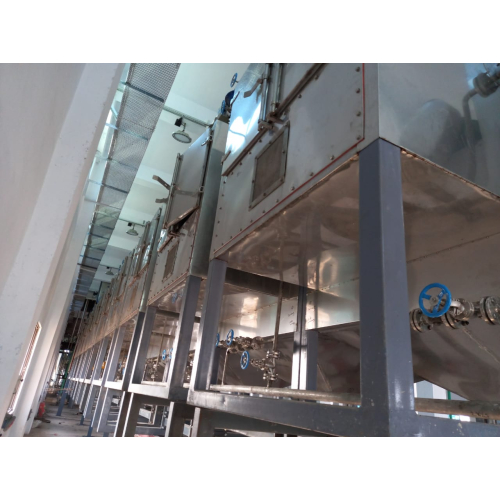
Swamiraj Engineering offers advanced and economical belt drying machines to meet the demands for continuous dryers for the chemical industry. We are a Qualitative band dryer manufacturer located in Pune, Maharashtra specialising in Continuous Belt/Tray Dryers for Industrial purpose. Our Single/Multi Stage Continuous dryers are designed as per the requirements of our clients with varying widths from 1000 mm to 2500 mm and 12Mtrs to 30 Mtrs in length. For heating steam is used as medium. Dryers are made in Stainless Steel Grade 304 for contact Parts. Outside body & Non-Contact Parts are MS Powder coated
For Drying Pigment Filter press cake in Noodle form.
A belt dryer is an industrial drying system that operates by passing a continuous Belt or band of material over a heated surface, making it efficient for drying applications such as pigment drying. The working principle of a band dryer for pigment drying involves several key steps:
Successful drying of pigment noodles requires careful control of process parameters and a dryer designed to preserve pigment quality.
The wet material that is noodles are fed on the feed side of the equipment and is evenly spread across the entire width of the Continuous Belt conveyor.
The conveyor consists of stainless steel trays connected with each other forming a micro hinge with a wire mesh belt passing through it. The trays are fitted with stiffeners to prevent buckling and are fitted to steel chains on both sides of the machine. The chains are driven through sprockets and are equipped with a VFD drive to control the speed of the conveyor as per user requirement.
The dried noodles are discharged from the Delivery End of the dryer for further processing, grinding, or the hammer mill section.
The machine is divided into different zones along the length of the dryer. Each zone comprises a different set of steam coils with its individual circulating fans. This allows the user to set different temperatures in each zone along the length of the dryer by gradually increasing or decreasing the set temperatures as the product travels. A PID controller can set the desired temperature within a ±1 °C thereby eliminating variations in temperature.
The circulating fans collect hot air from the steam radiator and circulate hot air towards the particle side of the drying chamber. The hot air passes through the product, thereby drying it. The humid air is exhausted with the help of ducts and exhaust fans and is removed from the dryer.
The Control Panel comprises Temperature Indicators, HMI, VFD Drive for the conveyor drives, Humidity Indicators (optional), and Chart Recorders (optional) as well as the controls for each part of the dryer.